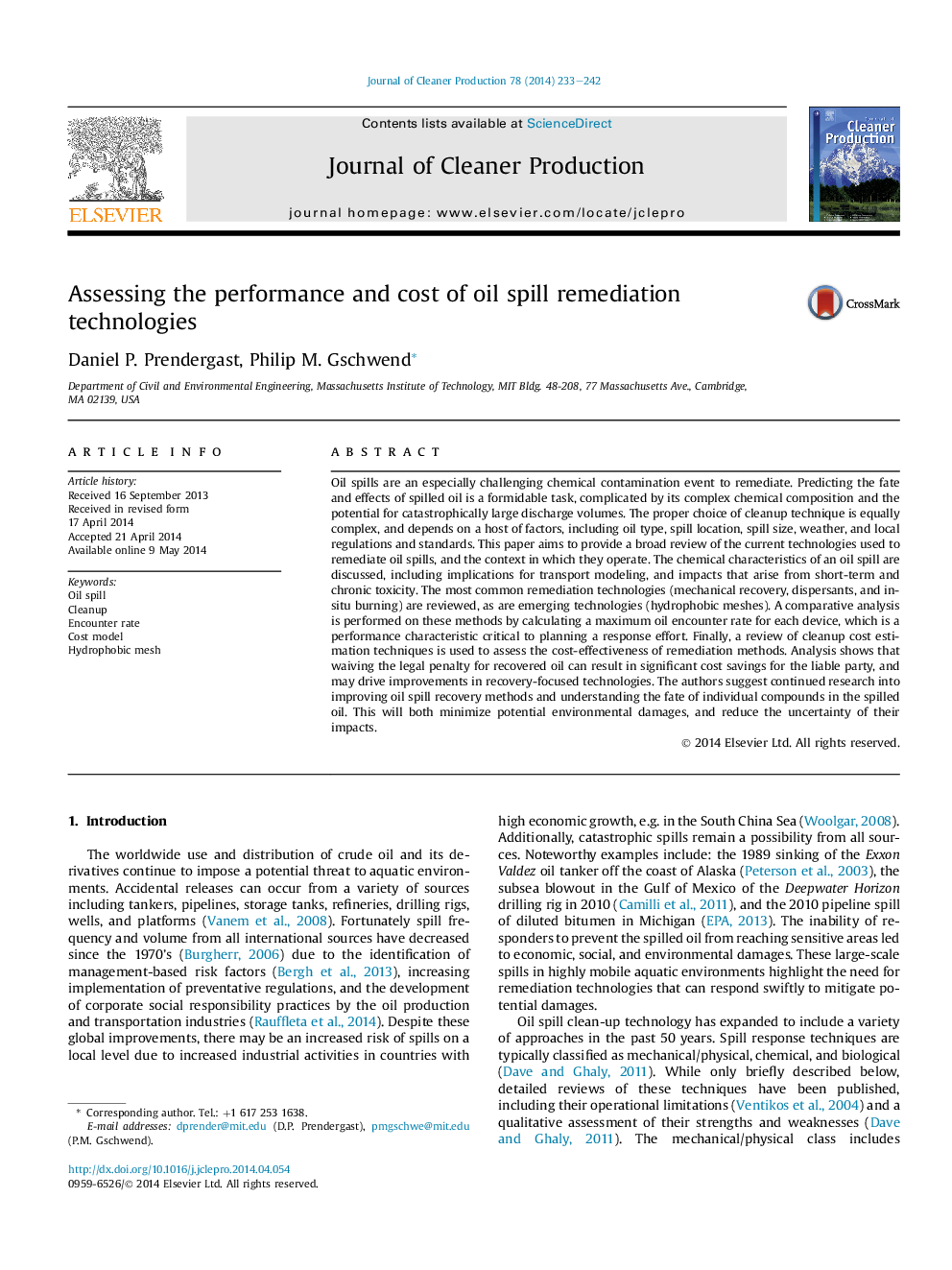| کد مقاله | کد نشریه | سال انتشار | مقاله انگلیسی | نسخه تمام متن |
|---|---|---|---|---|
| 1744891 | 1522168 | 2014 | 10 صفحه PDF | دانلود رایگان |
• Review of the composition and fate of spilled oil, including modeling approaches.
• Calculation of the maximum oil encounter rate for various remediation techniques.
• Estimation of cleanup costs including cost averted by recovering spilled oil.
• Net negative cost of cleanup can be achieved, promoting removal of contamination.
• Recommend increased development of oil spill recovery methods.
Oil spills are an especially challenging chemical contamination event to remediate. Predicting the fate and effects of spilled oil is a formidable task, complicated by its complex chemical composition and the potential for catastrophically large discharge volumes. The proper choice of cleanup technique is equally complex, and depends on a host of factors, including oil type, spill location, spill size, weather, and local regulations and standards. This paper aims to provide a broad review of the current technologies used to remediate oil spills, and the context in which they operate. The chemical characteristics of an oil spill are discussed, including implications for transport modeling, and impacts that arise from short-term and chronic toxicity. The most common remediation technologies (mechanical recovery, dispersants, and in-situ burning) are reviewed, as are emerging technologies (hydrophobic meshes). A comparative analysis is performed on these methods by calculating a maximum oil encounter rate for each device, which is a performance characteristic critical to planning a response effort. Finally, a review of cleanup cost estimation techniques is used to assess the cost-effectiveness of remediation methods. Analysis shows that waiving the legal penalty for recovered oil can result in significant cost savings for the liable party, and may drive improvements in recovery-focused technologies. The authors suggest continued research into improving oil spill recovery methods and understanding the fate of individual compounds in the spilled oil. This will both minimize potential environmental damages, and reduce the uncertainty of their impacts.
Journal: Journal of Cleaner Production - Volume 78, 1 September 2014, Pages 233–242
